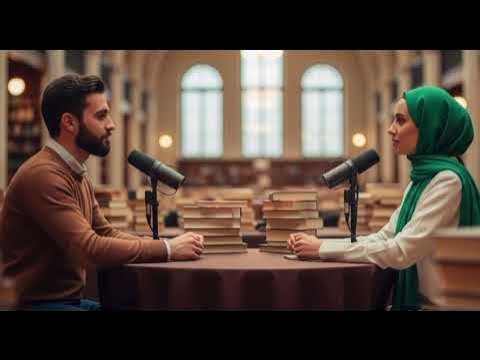Indigenous Art Practices Theory of Change slide v2
Summary
TLDRThe program aims to build self-capacity in engaging with Indigenous art practices, fostering confidence among participants to design and implement activities independently or collaboratively. Emphasizing the importance of respectful engagement, it provides foundational knowledge on colonialism and Indigenous art protocols. Through scaffolding, modeling, and practice, participants learn to evaluate resources and design meaningful activities. The final session encourages ongoing knowledge development and refining of perspectives, ensuring a robust lens for integrating Indigenous art into educational contexts.
Takeaways
- 😀 The program is designed to build self-capacity in indigenous art practices among educators.
- 🤝 Collaboration is emphasized as a valuable approach for engaging students with indigenous art.
- 📚 Participants will gain confidence in designing and implementing art activities independently and with colleagues.
- 🔍 A critical lens is developed to evaluate resources and make informed decisions regarding indigenous art.
- 📖 Initial sessions provide background knowledge on colonialism, cultural protocols, and art conventions.
- 🛠️ Resource selection and evaluation criteria are introduced to ensure appropriateness for educational purposes.
- 🎨 Activity design templates and ideas are shared to facilitate respectful engagement with indigenous art.
- 👥 The importance of practicing collaborative reflection and sharing insights among colleagues is highlighted.
- 🔗 Participants are encouraged to continually deepen their knowledge of indigenous art resources.
- 🌱 The program promotes ongoing growth and refinement of the lens through which art resources and activities are assessed.
Q & A
What is the main goal of the program discussed in the transcript?
-The main goal of the program is to build self-capacity in participants regarding indigenous art practices, ensuring that everyone develops confidence and the ability to design and implement activities independently or collaboratively.
Why is it important for non-indigenous educators to engage with indigenous art?
-It is important because there are not enough indigenous Elders and educators available, so non-indigenous educators need to be equipped to engage respectfully with indigenous art and culture.
What are the intermediate goals of the program?
-The intermediate goals include building a lens to inform decisions regarding resources and activity designs, as well as sharing knowledge, providing scaffolds, and modeling practices for participants.
What foundational knowledge was provided in the first session?
-The first session provided initial background knowledge covering history, colonialism, issues related to protocols and cultural appropriation, and conventions of Northwest and Coast Salish art.
What resources were provided to assist in the participants' learning?
-Links to materials and suggested paths for deepening knowledge related to indigenous art and artists were provided, alongside evaluation questions for assessing the appropriateness of resources.
What focus was emphasized in session two regarding activity design?
-Session two emphasized scaffolding and modeling around activity design, including project seed ideas, templates for activities, and methods for generating respectful and worthwhile activities even for those new to the work.
How did the program facilitate collaboration among participants?
-The program facilitated collaboration by providing open time for participants to practice design work, share ideas, and bounce concepts off one another during sessions.
What activities were suggested for participants to do between sessions?
-Participants were encouraged to review and practice evaluating art resources, explore examples of art and artists' reflections, and dabble in activity design before the next session.
What was the focus of the third and final session?
-The third session focused on revisiting knowledge, with presentations from colleagues on how to continue strengthening the knowledge base and expanding the understanding of indigenous art resources.
How should participants view the development of their knowledge lens over time?
-Participants should view the development of their knowledge lens as an ongoing process that becomes more robust and refined, helping to inform resource and activity design decisions as they continue their work.
Outlines

This section is available to paid users only. Please upgrade to access this part.
Upgrade NowMindmap

This section is available to paid users only. Please upgrade to access this part.
Upgrade NowKeywords

This section is available to paid users only. Please upgrade to access this part.
Upgrade NowHighlights

This section is available to paid users only. Please upgrade to access this part.
Upgrade NowTranscripts

This section is available to paid users only. Please upgrade to access this part.
Upgrade NowBrowse More Related Video

Program Pesantren Ramadhan Online, || Kantor Kementerian Agama Kabupaten Bangka Tengah

DOVE Programa para la Autoestima

[FILM DOKUMENTER] SENI UNTUK SEMBUH (melihat lebih dekat keseharian pasien RSJ Bangli-BALI, th 2015)

What is Peer Counseling

Small Group Counseling - Self-image

Apresiasi Literasi Tingkat Desa: Menampilkan hasil karya dan memberikan penghargaan kepada pemenang
5.0 / 5 (0 votes)